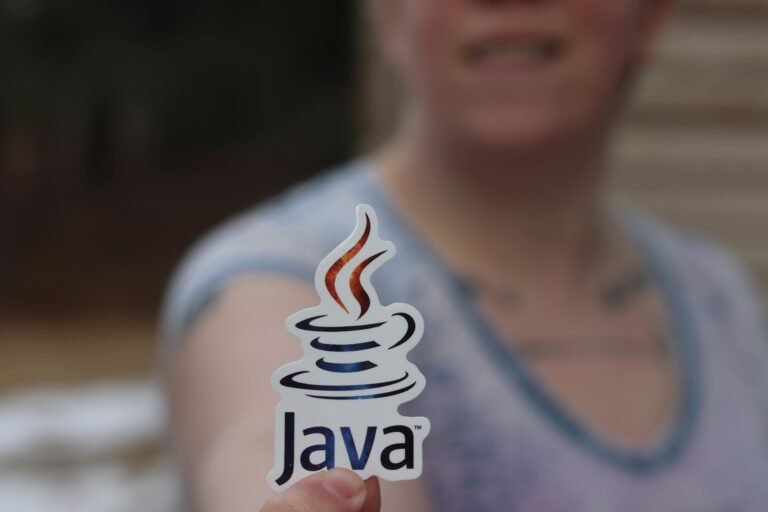Understanding Java Data Types: Primitive and Non-Primitive
In Java, data types define the kind of data that variables can store. Understanding Java’s data types is essential for writing efficient programs and managing memory effectively. Oracle’s Java Data Types Guide provides further insights into how data types work in Java. In this article, we will explore Java’s primitive and non-primitive data types in detail.
What are Data Types in Java?
Data types specify the different types of values that can be used and stored in variables. Java has two main categories of data types:
- Primitive Data Types – Basic types built into the language.
- Non-Primitive Data Types – More complex types such as objects and arrays.
1. Primitive Data Types in Java
Primitive data types are predefined by Java and are the most basic building blocks for data manipulation. Java has eight primitive data types:
1.1 Integer Types
| Type | Size | Default Value | Range |
|---|---|---|---|
| byte | 8-bit | 0 | -128 to 127 |
| short | 16-bit | 0 | -32,768 to 32,767 |
| int | 32-bit | 0 | -2^31 to 2^31-1 |
| long | 64-bit | 0L | -2^63 to 2^63-1 |
Example: Integer Types
byte smallNumber = 100;
short mediumNumber = 20000;
int standardNumber = 100000;
long bigNumber = 1000000000L;1.2 Floating-Point Types
Java follows the IEEE 754 standard for representing floating-point numbers. You can read more about IEEE 754 floating-point arithmetic here.
| Type | Size | Default Value | Range |
| float | 32-bit | 0.0f | ~6-7 decimal digits |
| double | 64-bit | 0.0d | ~15-16 decimal digits |
Example: Floating-Point Types
float piApprox = 3.14f;
double preciseValue = 3.1415926535;1.3 Character Type
| Type | Size | Default Value | Range |
| char | 16-bit | \u0000 (null) | Unicode characters |
Example: Character Type
char letter = 'A';
char symbol = '@';1.4 Boolean Type
| Type | Size | Default Value | Possible Values |
| boolean | ~1-bit | false | true, false |
Example: Boolean Type
boolean isJavaFun = true;
boolean isRainy = false;2. Non-Primitive Data Types in Java
Non-primitive data types are more complex structures, including Strings, Arrays, Classes, Interfaces, and Collections.
2.1 Strings in Java
Strings in Java are sequences of characters enclosed within double quotes (" "). Strings are objects in Java, meaning they have built-in methods and are more complex than primitive types.
Example: String Type
String greeting = "Hello, Java!";
System.out.println(greeting.length()); // Prints the string length2.2 Arrays in Java
Arrays are used to store multiple values of the same data type in a single variable.
Example: Array Declaration
int[] numbers = {1, 2, 3, 4, 5};
String[] names = {"Alice", "Bob", "Charlie"};2.3 Classes and Objects in Java
Classes define the blueprint for creating objects. Objects are instances of classes.
Example: Creating a Class and Object
class Car {
String brand;
int speed;
void display() {
System.out.println("Brand: " + brand + ", Speed: " + speed);
}
}
public class Main {
public static void main(String[] args) {
Car myCar = new Car();
myCar.brand = "Toyota";
myCar.speed = 120;
myCar.display();
}
}Frequently Asked Questions (FAQ)
1. What is the difference between primitive and non-primitive data types in Java?
Primitive data types store simple values directly in memory, while non-primitive data types store references to objects.
2. Why is char 16-bit in Java?
Java uses Unicode to support international characters, requiring 16-bit storage for wider character representation.
3. What is the default value of a String in Java?
By default, a String variable is initialized to null if not assigned a value.
4. Can I store multiple data types in an array?
No, Java arrays must contain elements of the same data type. However, you can use Object[] for mixed types.
5. What is the advantage of using non-primitive types?
Non-primitive types allow for more complex data structures, object-oriented programming, and method calls.
If you’re looking for more detailed answers to common Java-related questions, visit Stack Overflow’s Java FAQs.
Conclusion
Understanding Java’s primitive and non-primitive data types is fundamental to working with variables and managing memory efficiently. Now that we understand data types, let’s move on to the next step in learning Java: Control Structures!
🚀 Now that we understand data types, let’s learn about control structures in Java!



